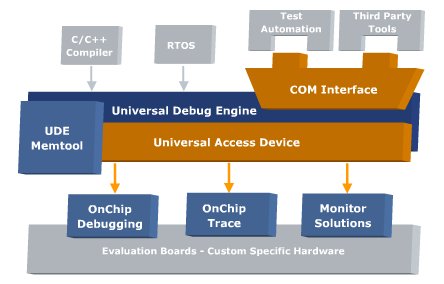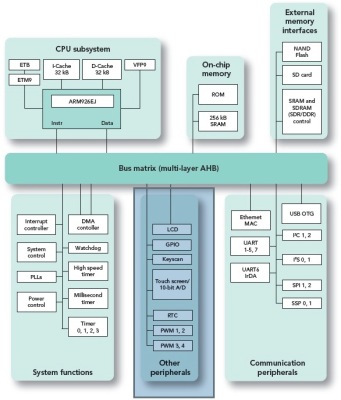Debugger gains Linux, ARM9 support
Sep 16, 2008 — by Eric Brown — from the LinuxDevices Archive — 2 views Lauta, Germany based Programmierbare Logik & Systeme (PLS) says its JTAG debugging software now supports Linux on ARM9 processors. Version 2.4 of the Universal Debug Engine also adds specific support for NXP Semiconductor's LPC32x0 processors, one of the first 90-nanometer ARM9 SoCs, says PLS.
Lauta, Germany based Programmierbare Logik & Systeme (PLS) says its JTAG debugging software now supports Linux on ARM9 processors. Version 2.4 of the Universal Debug Engine also adds specific support for NXP Semiconductor's LPC32x0 processors, one of the first 90-nanometer ARM9 SoCs, says PLS.
(Click for larger view of PLS's UAD2 debugging probe)
PLS is best known for Windows Embedded CE-compatible debugging products and development tools supporting the on-chip debugging interfaces found in 16-bit and 32-bit processors from Infineon Technologies and STMicroelectronics, as well as various PowerPC, ARM, and XScale derivatives. The company's Universal Debug Engine (UDE) software works fastest, it says, when used with the UAD2 hardware probe (pictured above), offered separately by PLS.
PLS says its UDE software now supports Linux for NXP's LPC32xx SoC (system-on-chip) and other ARM9 processors, via the company's “ARM9-Linux-Support” add-on. PLS also plans to introduce similar Linux add-ons for Freescale's Power Architecture, and for Intel's XScale architectures.

Universal Debug Engine architecture
The initial Linux add-on for UDE is said to enable parallel Linux kernel and application debugging under a single user interface. The simultaneous debugging helps to detect errors in the threshold between the operating system (OS) kernel and the application, says the company. Kernel debugging for ARM9 processors is accomplished via a standard JTAG interface, which also includes a remote console.
NXP's LPC3250
NXP's LPC3250 is the newest member of NXP's LPC3000 family, and one of the first 90-nanometer ARM9 SoCs, says the semiconductor firm. Based on an ARM926EJ-S core, the LPC3250 is clocked at 208MHz, and is said to be aimed at demanding industrial, consumer, medical, and network applications (see block diagram below).

NXP LPC3250 block diagram
(Click to enlarge)
Version 2.4 of the UDE supports the NXP SoC with high-speed debug access via JTAG when used with the company's Universal Access Device (UAD) 2 hardware probe. The combination offers download rates of up to 1MB/s, says PLS. The debugging software is also said to support all LPC32xx hardware-enabled performance characteristics such as code and data breakpoints. Because the UDE addresses the SoC's Memory Management Unit (MMU), designers are said to gain “a transparent access to memory and register of the core,” says the company.
Combined with the UAD 2 probe, the UDE's Embedded Trace Buffers (ETB) function enables the recording of up to 1 mega samples (about a million samples), claims PLS, with each sample able to contain eight additional external hardware signals. The recording is said to be synchronous with the system clock rate, thereby optimizing the use of trace memory, and enabling application-optimized timestamps. PLS also touts UDE's Enhanced Trace Macrocell (ETM) function, which displays a trace window showing the link between samples and the associated source code.
Availability
The PLS Universal Debug Engine 2.4 and ARM9-Linux-Support add-on appear to be available now. More information on the latter should be available here
This article was originally published on LinuxDevices.com and has been donated to the open source community by QuinStreet Inc. Please visit LinuxToday.com for up-to-date news and articles about Linux and open source.